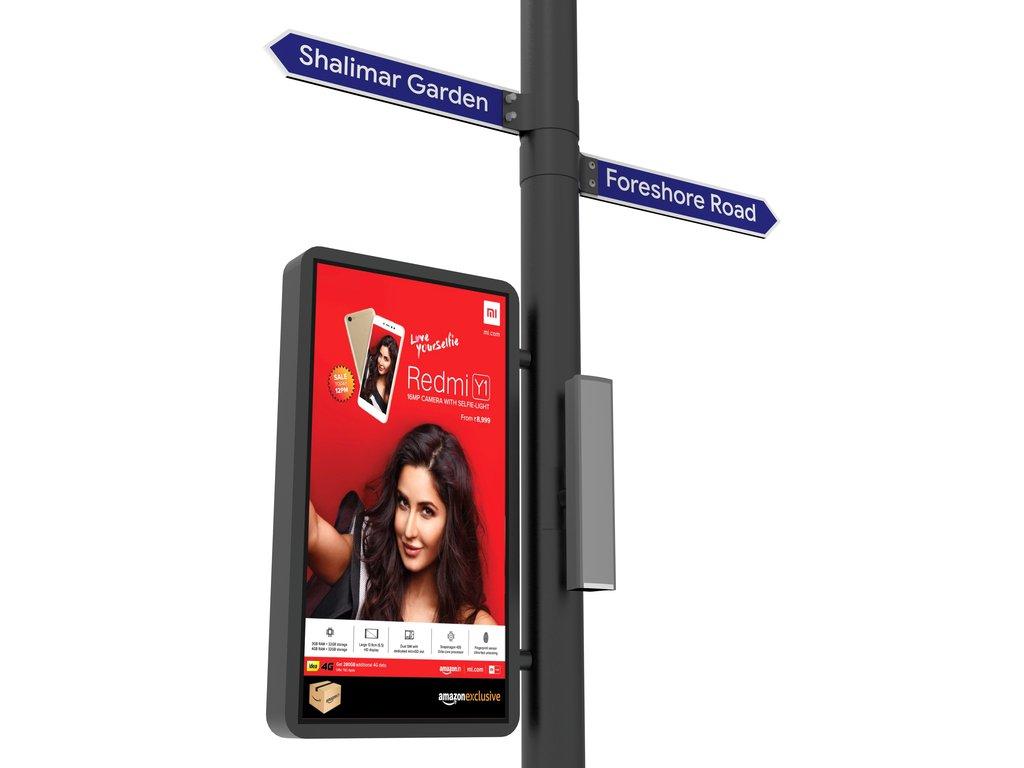Illuminating India: How Smart Poles Are Shaping the Future
Smart poles—multifunctional streetlights equipped with advanced technologies that enhance urban living and sustainability.
·
3 min read
What are Smart Poles?
Smart poles, also known as smart streetlights, are advanced lighting fixtures that incorporate various technologies to provide more than just illumination. They can serve multiple functions, including environmental monitoring, data collection, communication, and even energy generation. These poles typically feature:
- LED Lighting: Energy-efficient lighting that can be adjusted based on real-time needs.
- Sensors: Devices that monitor air quality, noise levels, and pedestrian traffic.
- Wi-Fi Hotspots: Offering free internet access to residents and visitors.
- CCTV Cameras: Enhancing public safety through surveillance.
- Charging Stations: Providing electric vehicle charging facilities.
- Information Displays: Offering real-time updates on public transport, weather, and local events.

Key Features of Smart Poles
- Energy Efficiency: Smart poles use LED technology, which consumes significantly less energy compared to traditional streetlights. Additionally, they can be equipped with smart sensors that adjust brightness based on ambient light and pedestrian activity, further conserving energy.
- Data Collection and Analytics: By integrating various sensors, smart poles can gather valuable data on traffic patterns, environmental conditions, and public space usage. This data can be analyzed to inform urban planning, improve infrastructure, and enhance public services.
- Connectivity: With built-in Wi-Fi hotspots, smart poles provide connectivity in public spaces, helping to bridge the digital divide. This feature is especially beneficial in areas with limited access to the internet.
- Public Safety: The inclusion of surveillance cameras and emergency call buttons can significantly enhance safety in urban areas. Real-time monitoring and communication features allow for quicker response times in emergencies.
- Sustainability: Some smart poles are designed to harness renewable energy, such as solar panels or wind turbines. This not only powers the pole itself but can also contribute to the grid, promoting sustainability in urban energy consumption.

Benefits of Smart Poles
- Enhanced Urban Living: By providing services such as free Wi-Fi, real-time information, and improved lighting, smart poles contribute to a more comfortable and connected urban experience.
- Improved Safety: The surveillance and emergency features help create safer public spaces, which can lead to increased foot traffic and local business growth.
- Data-Driven Decision Making: The data collected by smart poles enables city planners and policymakers to make informed decisions based on real-time insights, leading to more efficient urban management.
- Environmental Impact: By reducing energy consumption and promoting sustainable practices, smart poles can play a significant role in a city’s efforts to combat climate change and improve air quality.
- Economic Opportunities: The implementation of smart poles can stimulate economic growth by attracting tech companies, startups, and investors interested in smart city technologies.
Challenges and Considerations
Despite their numerous benefits, the deployment of smart poles comes with challenges:
- Privacy Concerns: The use of cameras and data collection raises significant privacy issues. Transparent policies and regulations must be established to protect citizens' privacy rights.
- Cost: The initial investment for smart pole infrastructure can be high. Cities need to weigh these costs against long-term benefits and savings.
- Maintenance and Support: Ensuring that smart poles are maintained and upgraded over time is essential for their ongoing effectiveness and reliability.
- Interoperability: Smart poles must be compatible with existing urban infrastructure and technology platforms to ensure seamless integration.
The Future of Smart Poles
As cities become more congested and the demand for sustainable solutions grows, the potential for smart poles is vast. Future developments may include:
- Integration with IoT: As the Internet of Things (IoT) continues to expand, smart poles will likely evolve to connect with other smart devices in the urban environment, creating a cohesive network that improves city management.
- AI and Machine Learning: Advanced analytics driven by AI can help optimize lighting, traffic flow, and resource allocation based on real-time data.
- Community Engagement: Smart poles could feature interactive displays that encourage community participation, allowing residents to report issues, share feedback, or access local resources.
- Global Adoption: As cities worldwide recognize the benefits of smart poles, we can expect to see their adoption increase, leading to a more interconnected and responsive urban environment.
No comments yet. Login to start a new discussion Start a new discussion